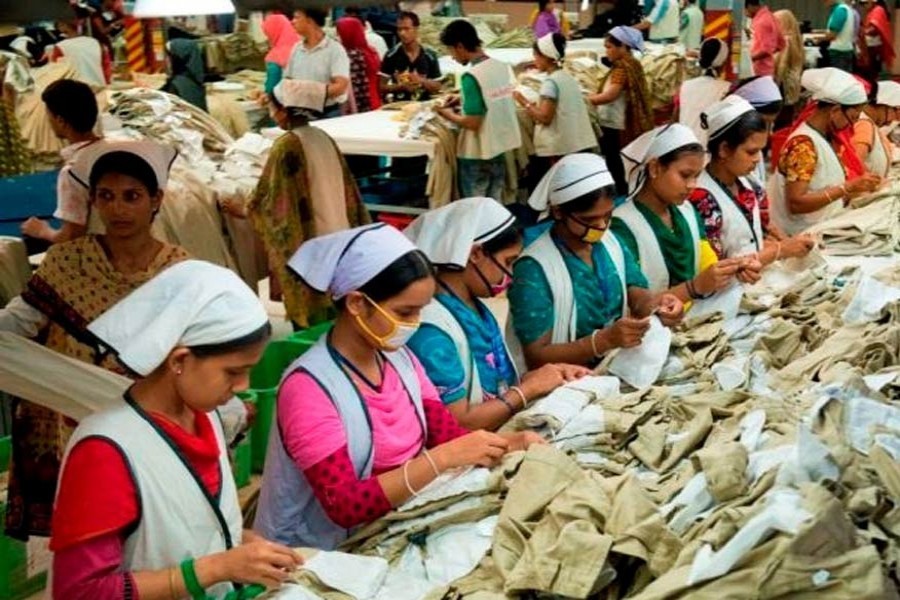Benefits from a stepped-up US-China trade war -- in the shape of increased garment export orders -- are reportedly accruing to Bangladesh.
By all accounts, an intensified trade war between the US and China is making American apparel buyers tilt towards Bangladesh. They are switching on to Bangladesh RMG sources to save extra costs due to raised import tariff barriers being exchanged between the US and China.
Some leading entrepreneurs of the readymade garments sector have confirmed that already Bangladesh has started receiving new buying orders from the US. Even old buyer brands or alliances have increased manufacturing and supply orders by 20-50 per cent, not to mention the indents, either placed or in the pipeline from a new string of buyers. For the last two-three months, the factories are not merely witnessing an increase in the number of enthusiastic inquiries but also visits from the buyer representatives with literally work orders in hand.
So long MB Knit Fashion in Narayanganj used to work for two American buying firms viz. Hemricks and SK Group; but now Knit Fashion Narayanganj has received work orders from a buying firm named Function Wear. It may be added that Hemricks has ordered for 130 thousand T-Shirt pieces compared with just 100 thousand pieces it has been importing per month for the last several years. In some cases, a three-fold increase is in prospect.
As it is, the US has traditionally been the largest exporter of apparels from Bangladesh. After the Rana Plaza distaster, the US market shrank. Following a lapse of 15 months, our garments export to the US has bounced back since January of this year. Actually, in the eight months (from January to August) export worth $3.66 billion was made to the US market representing a 4.51 per cent increase from the corresponding period last year.
One noteworthy prospect lies in the type of import demand we cater for. The US buyers are shifting reliance away from China for basic and inexpensive garment/knit items on to Bangladesh.
This also is in sync with China moving to higher technology and higher wage bills for workers, a signal that China gave for relocation of industry and business to other countries. But we have competitors in the region -Southeast Asia in particular - to contend with.
At any rate, if our entrepreneurs stay the course, even after the end of the trade war we shall be able to retain our advantage in basic and common brands as though enjoying captive markets.
The spurts in work orders are something to be optimistic about but they increase our obligations for a rapid capacity-building beyond the old levels. Previously, we heard about subcontracting to cope with the peak season that has all but begun as we approach mid-October. Until December-January, from the floor level to backward linkage to merchandising to transshipment and delivery all cogs in the machinery must work in unison. We cannot compromise on quality and the lead time for timely deliveries as well.
Giant Group's executive director Faruq Hassan has told a vernacular contemporary that three types of investment have been made in the RMG sector. So he goes on to confidently claim that along with an improvement in work ecology, modernisation of machinery and enhancement of productive capacity have been effected. So, he thinks we are ready to cope with the spiked supply orders.
While we share his optimism, we can't help flag off the imperative necessity for commensurate efficiency in terms port handling or air freight capacities.


